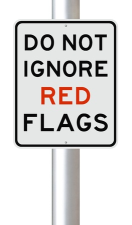Hiring a consultant can save your company a lot of money on your capture management process, but only if you find the right one. When you hire employees, you have control over how they spend their working day. However, when you work with consultants, they often have more autonomy.
Avoid paying more than necessary for your consultant by being aware of a few red flags you can easily avoid.
1. Inefficient Time Management
Most of the time, when you hire a consultant, you pay by the hour. That means every hour should be 100-percent focused on work for your company. This means the consultant is disciplined with how they spend their time and are able to avoid distractions.
Additionally, you need to make sure the consultant is working on the right things. The last thing you want to see is your highly paid consultant tackling rote work that can be done by anyone on the capture management team because you were not prepared with a proper list of work efforts.
Be wary of any consultant who spends more time “researching” and less time nurturing verifiable relationships with real government opportunities.
2. Costly Billing Errors
When you receive the monthly invoice from your consultant, take a careful look at the billable hours. If you only have a record of the consultant on-site for 60 hours that month but the invoice lists 80, there might be a problem. Ask the consultant to document what tasks they accomplished and when they accomplished them to justify all of those hours.
3. Inadequate Summary Reporting
When you get a report that lists a few bullet points and no details, it’s time to take a closer look at your consultant’s activities. When consultants don’t communicate their activities or actions with appropriate detail, it can be a big red flag.
Detail is what tells you exactly where you are in the capture management process and helps determine your next steps. When details are missing, it might mean that you’re looking at a to-do list, not an actual report.
4. Lack of Progress
You’ve looked at your consultant’s invoices and compared them to the reports you receive. Unfortunately, the time doesn’t seem to match the amount of progress. Why is it taking so long to make contact with a prospect? Why haven’t meetings been scheduled with several of the agencies in your prospect pipeline?
When your consultant is spending a lot of time on preparation and not delivering a lot of progress, it might be time to reevaluate the working relationship.
5. Expertise Fails to Manifest
You probably interviewed several candidates before deciding on a consultant. You checked references and asked for information about how they work. You laid out expectations at the beginning of the contract. Your consultant has reams of experience on paper, but that expertise doesn’t lead to actionable meetings — internally or externally.
One of the biggest benefits to working with a consultant is the ability to control the faucet. When the working relationship is no longer beneficial to your capture management process, you can let the consultant go, instantly. There is no unemployment to worry about and you can onboard someone else, as soon as possible.
When you have dozens of government opportunities in your pipeline, you need a capture management consultant who can move things along and develop the opportunities. With the right consultant, you can increase your rewards. But when a consultant doesn’t work out, it’s just a drain on resources.




